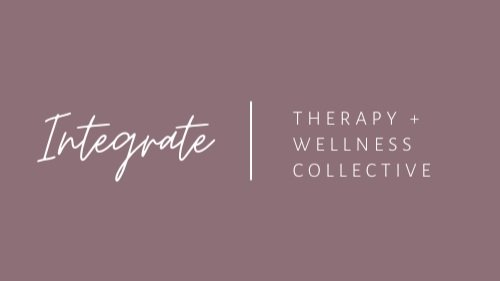Not Sure What You Need? A Roadmap to Discovering Your Needs After Experiencing Trauma
By Jen Bennethum
After experiencing trauma, it's common to feel disconnected from your internal landscape. You may know something is off—anxiety flares, numbness lingers, boundaries blur—but finding language for what you need can feel elusive. Trauma doesn't just disrupt our nervous system; it fragments our connection to internal cues, sometimes making even basic emotional needs difficult to identify. Rebuilding that connection takes tenderness, curiosity, and time. This blog invites you to embrace uncertainty as the starting point for self-discovery.
“Learning to love and be kind to ourselves is a lifelong journey.”
— Brené Brown
Discovering Common Needs
Over time, survivors tend to uncover a handful of core themes in their healing work. You might find yourself longing first for a sense of safety and stabilization—feeling solid in your body, knowing how to calm racing thoughts or an activated nervous system. Other times your heart leans toward naming and processing emotions, learning how to extend compassion inward when old memories surface.
Reclaiming trust in your mind-body connection often follows, as you notice where tension lives in your tissues and explore movement or breathing practices that restore ease. Boundaries may emerge as another frontier—learning where you end and someone else begins and practicing authentic yeses and noes. As you weave these threads together, you might begin to look for meaning beyond survival, shaping your personal story into one of resilience and purpose.
Map the Landscape of Your Current Experience
Take an inventory—not to fix anything, but to witness. What shows up most often for you emotionally? Irritability? Shame? Emptiness? What situations trigger a shift in mood or body state? Mapping these patterns offers clues about unmet needs. For example, persistent over-giving may signal a need for boundaries, while apathy could point toward a yearning for purpose or play.
Reflective Exploration
Set aside a quiet ten- to fifteen-minute window. Light a candle or simply settle into your favorite chair, then journal whatever flows. Ask yourself how “safety” feels in your body today. Imagine what progress would look like a month from now. Picture your ideal self—what freedoms or capacities would you have? Note what scares you most about healing, then honor any small steps you’ve already taken that offered relief. Let your pen wander without judgment; these raw impressions become clues to your unmet needs.
Listening to Your Body
The body speaks the language of symbols and sensations. Tightness in your chest may not just be “anxiety”—it might be a longing for self-expression. A heavy fatigue could be grief disguised as apathy. Instead of dismissing sensations, get curious: If this tension could speak, what might it say? What does this ache need? Often, our unmet emotional needs are housed in the body's whispers.
Close your eyes and scan your head, neck, chest, belly, hips, legs, and feet. Notice any tightness, warmth, flutter, or heaviness. Ask internally, “Where do I hold tension right now?” and “What would feel safe if it shifted?” Check in with your breath—shallow or deep, rapid or slow—and simply acknowledge its rhythm. Naming these sensations gives you an anchor for future somatic exercises or gentle movement practices. You can also ask yourself, “what do I need right now” after doing this scan.
You might pause to ground through your senses: name five things you see, four you hear, three you can touch, two you smell, one you taste. Or spend two minutes counting each inhale and exhale. In the evening, jot down three small wins alongside three worries. Take a short walk in nature or stretch through a gentle yoga flow. Notice which rituals soothe you and which stir discomfort—both responses point toward unmet needs waiting to be named.
Reclaim Choice and Voice
After trauma, it’s easy to lose touch with our internal “yes” and “no.” Practicing small, intentional choices—what to eat, who to call, how to spend a few minutes—rebuilds your ability to notice and assert what you want or need. Therapy, expressive arts, or voice-based practices can help reclaim this sense of agency.
Name Your Needs Without Judgment
Needs are not weaknesses; they are signs of vitality. You may need connection, solitude, clarity, comfort, movement, meaning. Let yourself name these without censoring what feels “too much” or “not enough.” Even ambivalence can be a need—for space, for discernment, for patience with your own unfolding.
Try saying: “Right now, I need…” and fill in the blank, even if your answer is, “I need help figuring that out.”
Looking Ahead
As healing unfolds, your needs will shift. Identifying your needs is not a one-and-done task but an evolving practice—each new insight brings you closer to reclaiming safety and wholeness. You might find yourself renegotiating goals mid-therapy or discovering new ways to express your needs through art, movement, or sound. Technologies like vagal-tone tracking and biofeedback may become tools for fine-tuning your awareness.
You’re not broken for not knowing your needs. You’re responding to a world or experience that asked you to survive by disconnecting from them. Reclaiming that connection is not about having all the answers—it's about gently returning to yourself. Needs, like wounds, need tending—not fixing. And the more we can name and meet them, the more whole we become.
Stay curious: listening to every part of yourself and honoring what you uncover will guide you toward lasting transformation. If you’d like more structure, check out some questions to ask yourself when exploring your needs. Please let us know at Integrate Therapy and Wellness Collective what we can do to help and walk with you on your journey.
